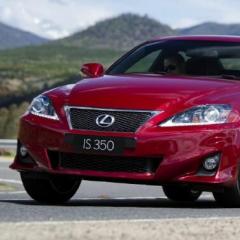What's The Deal With The Lexus 2.5 V6?
-
Latest Member Posts
-
0
Car tyre valve stems, TPMS?
On my recently purchased 2014 NX 300h the tyre valve stems are solid metal not rubber like normal. Does this mean I have TPMS? In the Setup screen TPMS is there but does not respond to a button click. Baz -
-
0
LS460 Folding Mirror Doesn't Stop.
Hi. The driver's mirror on my RHD LS460 folds in and out okay, but when folding in, it gets to the stop position but keeps trying to go further, so it continuously clicks. Is this repairable, or will the mirror have to be replaced? Has anybody fixed this problem? If so, how? Cheers. -
-
0
Carplay issues with iPhone IOS 18.1 making & receiving calls
Just wondering if anyone else has recently encountered the following issue: I have two phones now running with IOS 18.1, an iPhone SE and iPhone 16 and they both are having the same problem, i.e. when making a phone call, the party I'm calling can just barely make out what it is I'm saying. I first encountered the problem with my iPhone 16 and at first thought it was the cable connecting to the USB-C on the phone. I went out and purchased a wireless CarPlay adapter which circumvented the problem. However today I needed to connect the iPhone SE and it too got the same problem in that when making a phone call, the person I'm calling can just barely make out what it is I'm saying. Checking sites in the USA it appears to be a common problem. UPDATE: The problem did not exist using IOS versions prior to IOS 18
-



Recommended Posts
Create an account or sign in to comment
You need to be a member in order to leave a comment
Create an account
Sign up for a new account in our community. It's easy!
Register a new accountSign in
Already have an account? Sign in here.
Sign In Now